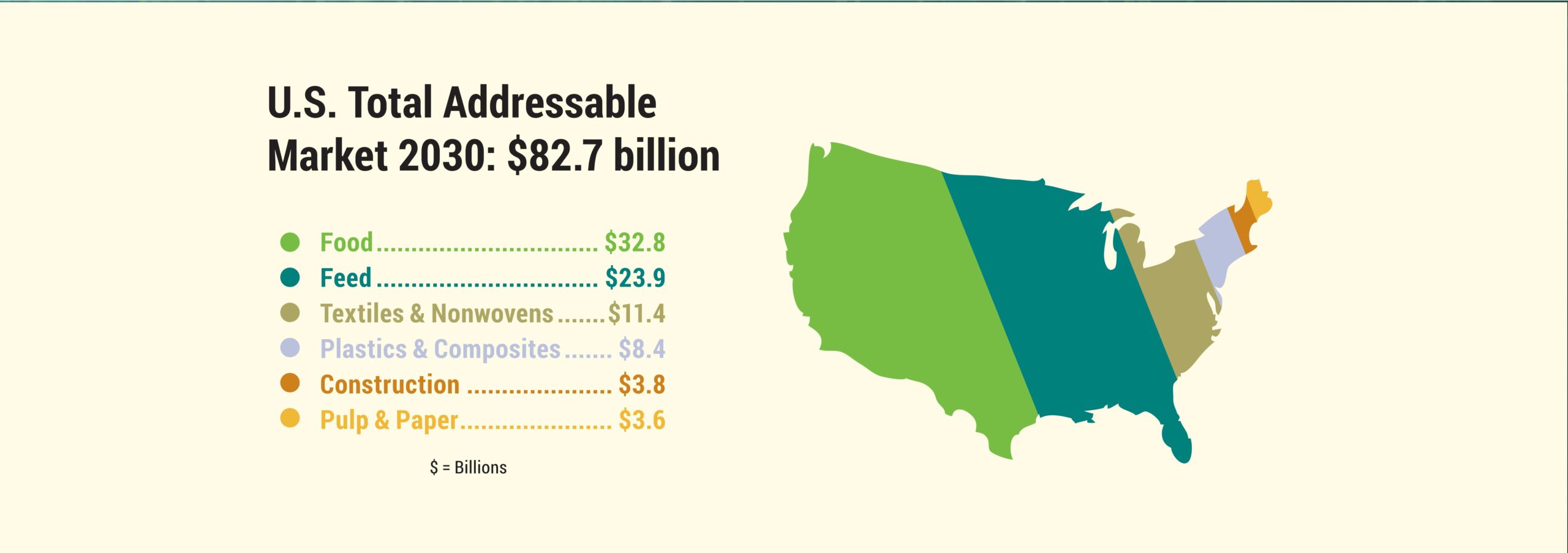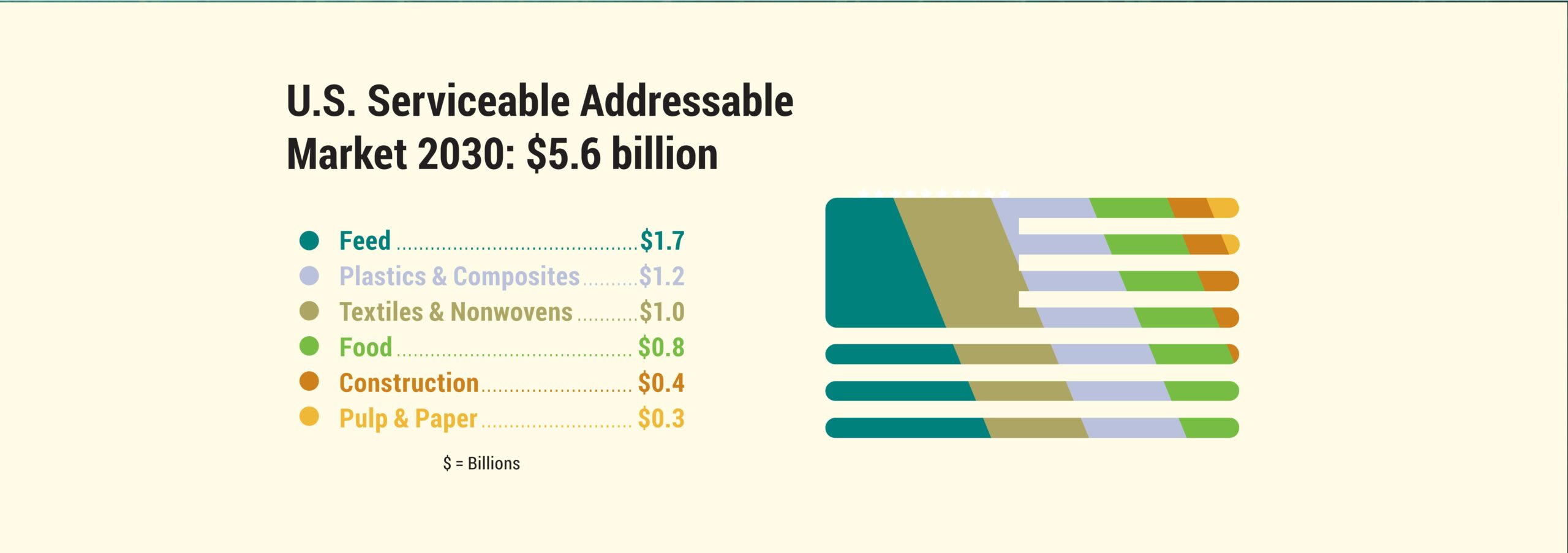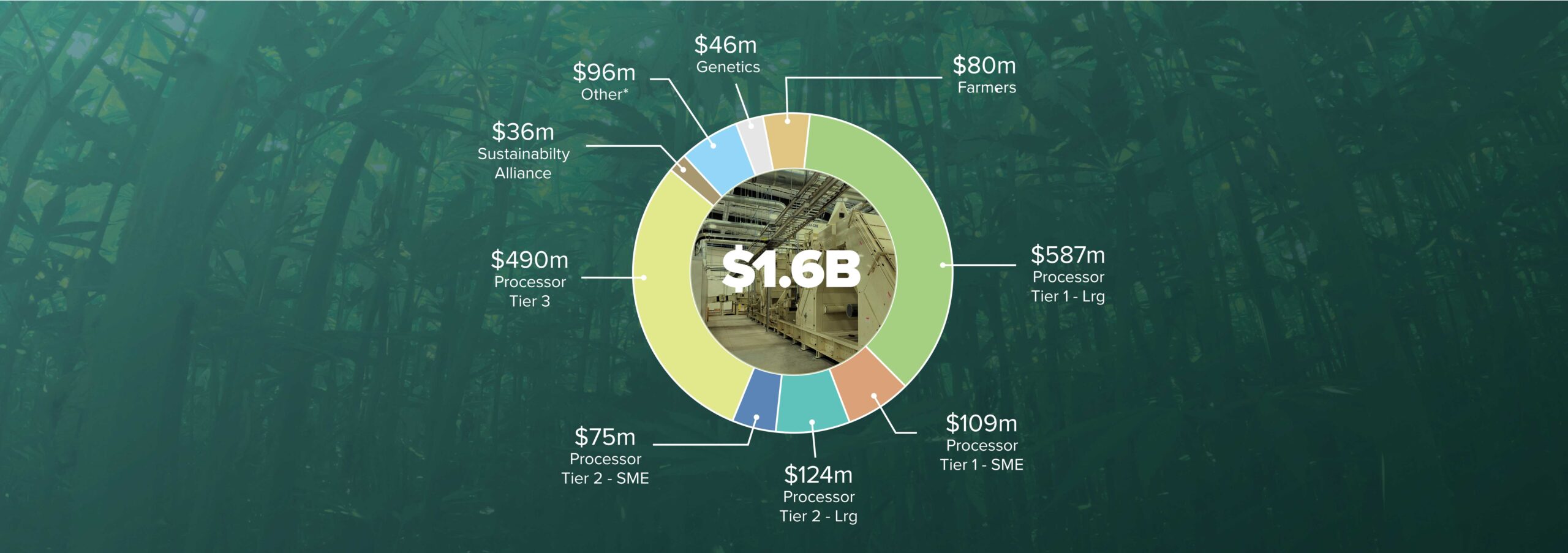SEEING THE U.S. INDUSTRIAL HEMP OPPORTUNITY
In the next 20 years, one resource will prove key to sustainable manufacturing in tech, housing, automotive, clothing—even nutrition. And it’s getting ready to take each by storm.
The Problem.
As population growth increases the demand for housing construction, clothing manufacturing, food production and water utilization, the viability of our current production model appears more and more fragile. Between 20 and 40% of the global land area is degraded or degrading, water scarcity is rising while polluted water is now widespread, the abundance of petroleum-based manufactured goods is creating unimaginable amounts of waste, and greenhouse gases keep increasing.
Imperatives.
A growing awareness among consumers, governments, and corporations is asserting alternative models of development, production, and consumption. The circular economy, bio-based materials, short supply chains, plant-based foods, and regenerative agriculture are five major trends that aim to respect the planet’s boundaries by minimizing material extraction, energy use, and environmental pollution. Investors and corporations are realizing that sustainability now drives business resilience, competitiveness, and capital attractiveness; to “future-proof” growth, they have made ambitious commitments to reduce their reliance on traditional materials, production techniques, and systems.
The Solution.
Industrial hemp is an agricultural crop that can generate both sustainability and product performance for multiple industries. As a sustainable cropping alternative, the plant is highly regenerative for soil, improves water retention, boosts the yield on subsequent crops, and sequesters tremendous amounts of CO₂; its uses as a biomaterial and ingredient across multiple sectors like plastics & composites, textiles, pulp & paper, construction, and nutrition magnify its sustainability value. On the performance side, industrial hemp contributes its strong attributes to many diverse applications: light weight for plastics, durability and stiffness for composites, insulation, and fire resistance for construction,and extremely high nutritional content as human food and animal feed.
The Opportunity.
After 80 years of legal prohibition, U.S. industrial hemp is small, nascent, and decades behind that of countries like China, Canada, and France, but it could flourish into a $2.2 billion annual revenue industry by 2030 and create 8,166 jobs, representing $454 million in annual payroll. Additionally, by 2030, we forecast 10-20% yield increase for 1,250 farmers on their post-hemp crops, over 2 million tons of CO₂ sequestered, and 736,000 pound of glyphosate cut.


The Goal.
Building an industry based on an agricultural crop, like hemp, is complex and takes a significant amount of time, usually decades. However, the possibility exists to accelerate the development of U.S. industrial hemp through the concerted efforts of farmers, industrial processors, corporations, philanthropic and commercial funders, and with government support. “The U.S. Industrial Hemp Opportunity” report describes the development model to achieve this with a faster timeframe. The report can be found at www.hempinitiatives.org One of the report’s recommendations is to establish an industrial hemp accelerator that will attract and channel funding to the different actors in the industry.
THE U.S. INDUSTRIAL HEMP ACCELERATOR
We estimate the total amount needed to anchor the industry at $1.6 billion (inflation-adjusted) for the period 2024-2030:
The amount covers working capital, capital expenses, funds for research and development, business development and marketing, and tools to integrate the supply chain. As with any nascent industry, strong capitalization and access to funding will be critical to mitigating the inevitable growing pains. We want to be a significant part of meeting the fundraising need and be catalytic for others to invest in industrial hemp.
What is the Accelerator?
With such a nascent industry, creating a track record of successful investments and companies will be paramount to attract the necessary capital. As we promote the opportunity to a range of potential investors and donors interested by the industrial hemp value proposition, three ways to participate will be offered:
- Launch of a Blended Capital Fund in 2024: combining philanthropic grants, equity, debt, and possibly government funds into a vehicle to achieve an optimal return, risk, and impact outcome. We envision a $25-35 million first fund with a short duration to ensure limited risk, and issuing mainly collateralized debt, possibly with some convertible notes. Follow-on funds will be launched as the industry grows.
- Investment services: for investors and donors preferring a targeted approach by sector or specific themes, we offer deal sourcing, due diligence, investment closing and investment management.
- Industry-building initiatives (business development, supply chain improvements, alliances, labels & certifications) through a non-profit federating organization, the Industrial Hemp Sustainability Alliance.

Who is the Accelerator for?
The Industrial Hemp value proposition is wide enough to appeal to investors with various goals.
ESG-first investors will be most interested in the environmental benefits or in the impact to rural
communities through job creation and improved farmer income. Examples: family offices, foundations, and impact investors.
Value-first investors will be attracted by the business opportunity or the strategic benefit of future-
proofing their value chain. Examples: corporations, private equity, and agriculture-focused funds.
Investment Strategy:
The investment strategy will aim to develop a redundant and resilient value chain while balancing risk, return, and impact.

To learn more about the hemp opportunity within North America, contact [email protected]
Share this:
